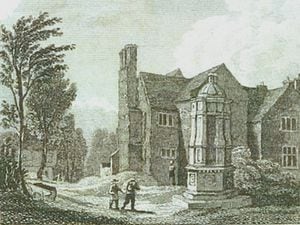Reminder of historic scandal that dripped blood and betrayal sits in Albrighton
Graveyards are a protracted puzzle, a crumbling stone maze of chiselled clues, writes Mike Lockley.

The epitaphs on ancient headstones hint, in a single line, at the life led by those laid to rest in the soil at their foundations.
We take the words and brief poetry, set to slate or marble over 100 years ago, and create a mental portrait of their world: their miserable battle against poverty, their wartime heroics, their Downton Abbey existence in the parish’s “big house”.
In the autumn afternoon stillness of St Mary Magdelene Church, a 12th century place of worship in Albrighton, the traffic of Wolverhampton a dull hum in the seven-mile distance, I silently contemplated the truly extraordinary life of Francis Talbot whose tomb is inside the building.

No other interred in the grounds lived such an adrenaline-fuelled existence, no other cheated death so many times.
Yet history has near forgotten Talbot, 11th Earl of Shrewsbury – and that’s an injustice. There are no images of him to be found, unlike those who were to be his downfall.
The peer’s life and that of his bed-hopping second wife Anna Maria, a woman high on immorality and exceedingly low on marital loyalty, is the stuff of Hollywood swashbucklers. It is an action-packed book, each page dripping blood, betrayal and bawdy, X-rated liaisons.
Make no mistake, Talbot, whose residence was Pepper Hill, Boningale, was the blueprint for Errol Flynn’s sabre-rattling roles.
He survived the English Civil War, a conflict in which he served the Royalist cause with distinction, only to fall victim to his wife’s insatiable lust. During the mid 17th century, she was Britain’s most celebrated scarlet woman, conjuring fascination and condemnation from the public in equal measure.
Some historical documents hint, in flowery terms, at Anna Maria’s desires: she was a “passionate woman”, she was wild. Those with a more earthy view of the past have dubbed her a nymphomaniac.
Today the tabloid press would probably describe her as a swinger. She, the Countess of Shrewsbury, was a breath-taking beauty, whose image, painted by Sir Peter Lely, now hangs at the National Portrait Gallery. There is also a statue of her by Thomas Burman at St John’s College, Cambridge.
Anna Maria was certainly a source of constant embarrassment to her husband. An accomplished swordsman, he fought five duels for her honour, even though the fight for his wife’s reputation had been lost long before.
He was evidently besotted with the controversial countess who certainly knew how to cast a spell over men. I’ve traced six duels fought for her, because of her.
She was the embodiment of fatal attraction.
On the mist-shrouded morning of January 16, 1668, at Barn Elms, Richmond upon Thames, Talbot took part in one duel to many.
Had I been present on that fateful day, I would’ve pulled the blue blood to one side and in no-nonsense, Black Country terms advised: “Forget it mate, she isn’t worth it.”
Anna Maria wasn’t.






